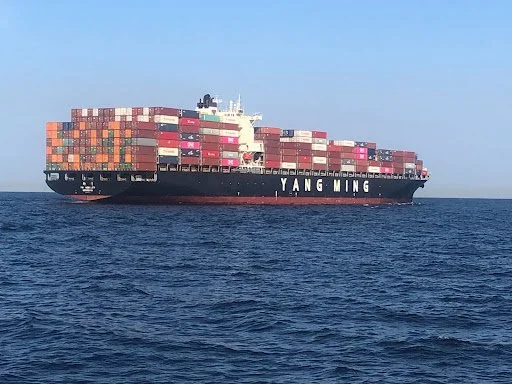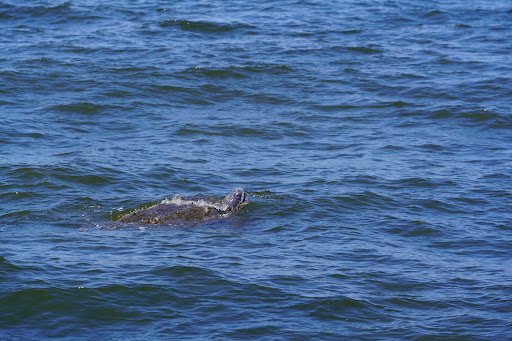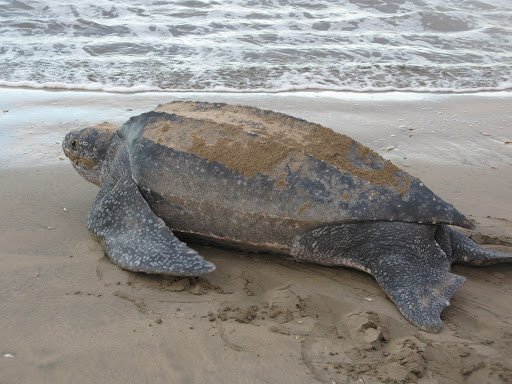We all know buying local reduces carbon emissions and can help combat climate change, but did you know it can also help reduce threats to sea turtles? International shipping often relies on the use of massive cargo ships to transport goods across our oceans. Sea turtle migration paths can intersect with vessel traffic and nearshore shipping lanes can overlap with important foraging habitats. Interactions with large vessels and other boats are most likely to occur when sea turtles surface to breathe. Strikes and wounds from propellers can cause grave injuries to sea turtles (sometimes by compromising their ability to regulate buoyancy) and even death. Necropsies of stranded sea turtles often cite ship or boat strikes as a probable cause of mortality.
Buying holiday gifts manufactured overseas increases the need for large shipping vessels which pose a grave threat for sea turtles. Cargo ships can travel at up to 24 knots (around 26 miles per hour). The risks large, fast-moving cargo vessels pose to marine mammals are better understood, but less is known about their impacts on sea turtles.
A leatherback surfacing near shipping lanes southwest of San Francisco, which lead to the Port of Oakland: one of the four largest international shipping ports on the US West Coast
Photo Credit: George Shillinger
Upwell is studying the impacts of shipping traffic on sea turtles, particularly pelagic species like leatherbacks. Melissa Vezard, a student at the University of Maryland Center of Environmental Science, began her collaborative research with Upwell by comparing vessel traffic data with leatherback movement data. Dr. Dong Liang, a long-time partner of Upwell at the University of Maryland, advised on the project. Melissa focused her analysis on overlapping vessel and sea turtle movements during the leatherbacks’ vulnerable internesting phase when females remain concentrated in nearshore habitats along the Caribbean coastline of Costa Rica in proximity to the port of Limón. She used Upwell’s satellite tracking data derived from leatherback turtles tagged (using Argos satellite tags manufactured by Wildlife Computers Inc.) at their nesting beach in Pacuare Wildlife Reserve. Upwell obtained vessel traffic for Melissa’s analysis from Spire Maritime for the corresponding period (collected using a GPS tracker that records vessel time and location).
Female leatherback departing from a Costa Rican nesting beach
Photo: George Shillinger
First, Melissa analyzed vessel traffic exposure and speed and compared it to turtle movement characteristics, such as their speed and turning angles, to examine the overlap and determine if there was any impact on the leatherbacks’ behavior. The turning angle is defined as the change in angles between movements calculated based on three consecutive movements. She found that the turning angles of turtles concentrated off the nesting beach appeared significantly associated with vessel exposure and speed. More research is needed, but our findings could imply that the tracked leatherbacks were attempting to avoid areas with vessels.
Upwell intends to conduct additional studies comparing sea turtle movements with vessel tracking data. Our results could help to inform management efforts for endangered leatherbacks and possible mitigation strategies to reduce risk. Our individual actions can make a difference for leatherbacks and other sea turtles too. If you’re planning to shop for gifts this holiday season, support local artisans and avoid purchasing items shipped from overseas to help our planet’s sea turtles.



